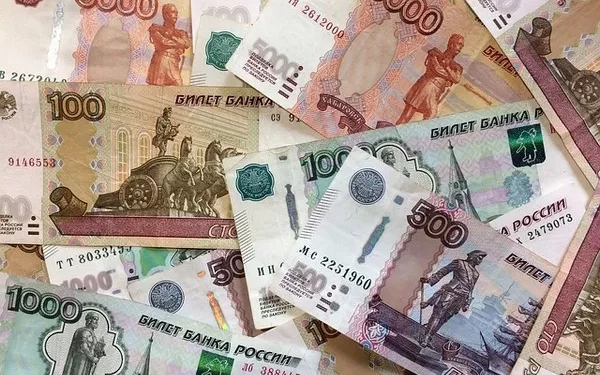The foreign exchange market, or forex, is a dynamic and complex financial marketplace where currencies are traded. Trillions of dollars are exchanged daily, making forex trading one of the largest and most liquid financial markets globally. Among the myriad of currencies traded, the Russian ruble stands out as a significant player. In this article, we delve into the historical roots of Russia’s use of the ruble, exploring its evolution within the forex market.
The Birth of the Ruble: An Overview
The Russian ruble has a rich history dating back several centuries. Its origins can be traced to the late medieval period when it emerged as a unit of account in the Russian Empire. The ruble, initially a measure of weight for precious metals, evolved into a full-fledged currency over time. By the 18th century, the ruble had become the official currency of Russia, reflecting the country’s economic and geopolitical influence.
Russia’s Transition to a Fiat Currency System
In the aftermath of the Russian Revolution in 1917, the country underwent significant socio-political changes, leading to the establishment of the Soviet Union. During this period, the ruble underwent a transformation from a commodity-backed currency to a fiat currency. The Soviet authorities replaced the gold and silver backing with the state’s promise to redeem rubles for goods and services, a shift that aligned with global trends in monetary policy.
The Ruble in the Soviet Era
Throughout the Soviet era, the ruble remained tightly controlled by the government, reflecting the centralized economic planning characteristic of the socialist system. International trade involving the ruble was limited, and the currency was not freely convertible on the global stage. This lack of convertibility restricted the ruble’s presence in the forex market.
The Fall of the Soviet Union: Impacts on the Ruble and Forex Trading
The dissolution of the Soviet Union in 1991 brought about significant changes to Russia’s economic and monetary landscape. As the newly independent Russian Federation emerged, it faced the challenge of transitioning from a centrally planned economy to a market-oriented one. The ruble, too, underwent a period of volatility as economic reforms were implemented.
During the early post-Soviet years, the Russian government introduced a series of economic measures, including currency exchange rate adjustments and attempts to stabilize the ruble. However, these efforts faced challenges, and the ruble experienced periods of sharp depreciation. This volatility influenced the ruble’s standing in the global forex market, as traders and investors closely monitored developments in Russia.
See Also:Russian Ruble on Coinbase
The Era of Forex Liberalization in Russia
In the late 1990s and early 2000s, Russia embarked on a path of economic liberalization and financial market reforms. The government took steps to make the ruble more convertible and facilitate its inclusion in the global forex market. This marked a significant turning point for Russia’s participation in forex trading.
The Central Bank of Russia played a crucial role in these reforms, implementing policies to enhance the stability of the ruble and promote its acceptance in international trade. As a result, the ruble became more widely traded on the forex market, and its liquidity increased, attracting the attention of global investors.
Contemporary Forex Trading with the Ruble
In recent years, the Russian ruble has become a fixture in the portfolios of many forex traders. The currency’s value is influenced by a combination of domestic economic factors, geopolitical events, and global market dynamics. The Central Bank of Russia continues to play a pivotal role in maintaining the stability of the ruble through monetary policy measures.
One key aspect that traders consider when dealing with the ruble is its sensitivity to fluctuations in oil prices. Russia, being a major oil exporter, experiences a strong correlation between oil prices and the value of the ruble. Forex traders often closely monitor developments in the energy markets to gauge potential impacts on the ruble’s performance.
Challenges and Opportunities in Ruble Forex Trading
While the ruble has gained prominence in the forex market, it is not without challenges. Geopolitical tensions, economic sanctions, and fluctuations in commodity prices can lead to increased volatility in the currency. Forex traders navigating the ruble must be vigilant and stay informed about both domestic and international events that could impact its value.
On the flip side, the ruble presents opportunities for traders seeking diversification in their portfolios. Its correlation with commodities, particularly oil, can provide unique trading opportunities for those who can accurately anticipate market movements. Additionally, the evolving economic landscape in Russia and the government’s commitment to financial market development contribute to the ruble’s attractiveness for forex participants.
Conclusion: The Ruble’s Journey in Forex Trading
In conclusion, the Russian ruble has come a long way since its inception as a unit of account in the medieval Russian Empire. From its role in the centrally planned economy of the Soviet Union to its current status as a freely traded currency on the global forex market, the ruble has undergone significant transformations.
The evolution of the ruble in forex trading mirrors the broader economic and geopolitical shifts in Russia over the centuries. As the country continues to navigate its role on the world stage, the ruble will likely remain a focal point for forex traders, offering both challenges and opportunities in the dynamic landscape of international finance. Understanding the historical context of Russia’s use of the ruble provides valuable insights for traders looking to engage with this resilient and evolving currency in the contemporary forex market.
Related Topics:
A Comprehensive Guide on How to Safely Buy Russian Rubles Online
Dynamics of Russia Ruble Stock: A Comprehensive Analysis
Russia Ruble Sanctions: Implications and Insights


























